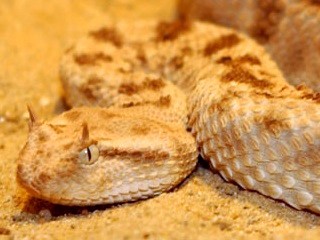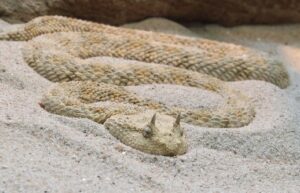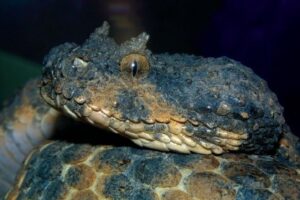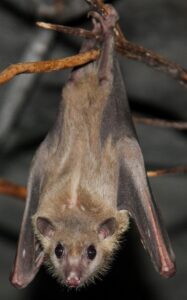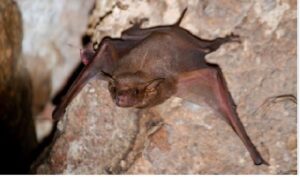Vipers:
Horned Viper – Cerastes cerastes (Linnaeus)
General Description
|
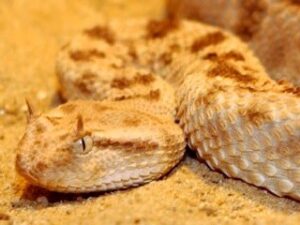
Credit: Jwinius
Credit: Holger Krisp |
- The colour pattern consists of a yellowish, pale grey, pinkish, reddish or pale brown ground colour, which almost always matches the substrate colour where the animal is found.
- Dorsally, a series of dark, semi-rectangular blotches run the length of the body. These blotches may or may not be fused into crossbars.
- The belly is white.
- The tail, which may have a black tip, is usually thin.
Life Cycle and Common Characteristics
- These snakes favor dry, sandy areas with sparse rockoutcroppings, and tend to avoid coarse sand. They are found around oases and up to an altitude of 1,500 metres.
- In captivity, mating was observed in April and always occurred while the animals were buried in the sand.
- This species is oviparous, laying 8–23 eggsthat hatch after 50 to 80 days of incubation. Females lay eggs under rocks and in abandoned rodent burrows.
- The hatchlingsmeasure 12–15 cm in length.
Damages and Medical Implication
- The venom of this horned viber causes swelling, necrosis, haemorrhage, nausea, vomiting, and haematuria.
- Venom yields vary, with ranges of 19–27 mg to 100 mg of dried venom being reported.

